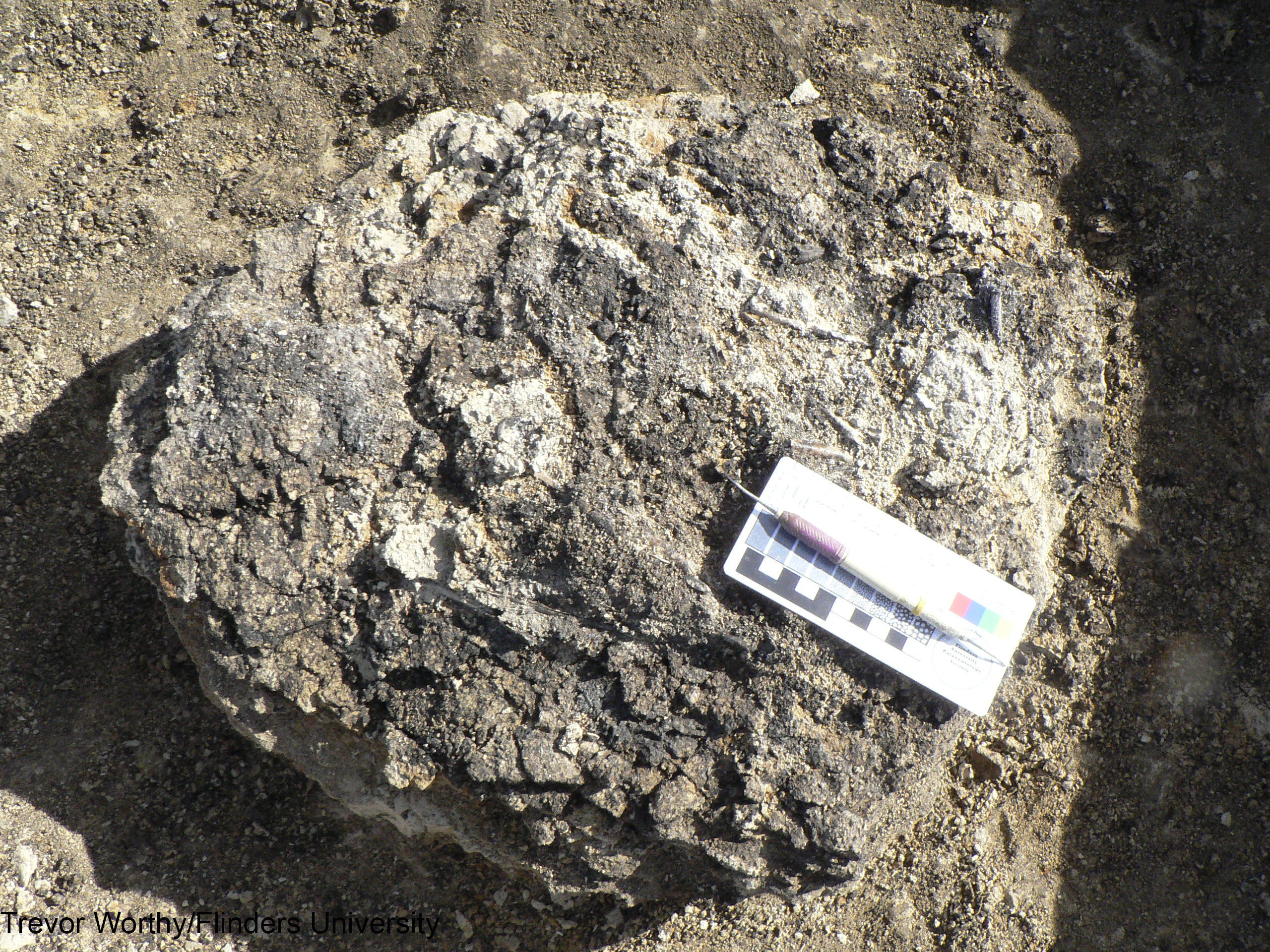Koala-hunting eagle terrorized Australia 25 million years ago

Twenty-five million years ago, an eagle with half-foot long talons snatched ancient koalas out of trees in Australia, a new study suggests.
Paleontologists discovered 63 fossilized bones from the ancient koala-hunter in 2016, while on an expedition to Lake Pinpa, a salt lake east of the Flinders Ranges in South Australia. After thoroughly examining the bones, the team recently named the newfound eagle species Archaehierax sylvestris. The ancient raptor has no direct descendants living today, they determined.
Since the bones date to the Oligocene epoch, which lasted from 33.9 million to 23 million years ago, the A. sylvestris specimen represents the oldest eagle fossil ever found in Australia, as well as one of the best preserved, the scientists reported Sept. 27 in the journal Historical Biology.
Related: Ancient footprints to tiny 'vampires': 8 rare and unusual fossils
"As apex predators, eagles and hawks are less abundant than the species they prey on," first author Ellen Mather, a doctoral student at Flinders University in Adelaide, Australia, told Live Science in an email. "This tends to carry over into the fossil record, as there are fewer chances an individual from these species will be fossilized."
And when they are found, eagle fossils often include very few bones — or sometimes only one — making the newfound fossil, with its 63 bones, an exceptionally rare find, the authors noted in their report.
Nowadays, Lake Pinpa, where the fossil was found, rarely holds any water and sits within a landscape of sand dunes sparsely adorned with grass and trees. But back when A. sylvestris soared through the skies, the lake looked strikingly different, senior author Trevor Worthy, a vertebrate paleontologist and associate professor at Flinders University, told Live Science in an email.
Sign up for the Live Science daily newsletter now
Get the world’s most fascinating discoveries delivered straight to your inbox.
At that time, the Lake Pinpa excavation site sat on the shore of a larger lake, or lake system, which extended for about 62 miles (100 kilometers) through a temperate rainforest. Fossil records indicate that fish, crocodiles and freshwater dolphins populated the lakes, and an array of shorebirds, possums and ancestral koalas hung out on the shore.
"Lake Pinpa, as a whole, is the most rich fossil site for this time period in South Australia," Worthy said. The earliest known ancestors of modern marsupials, such as bandicoots, possums, kangaroos and wombats, have all been found at the site, along with many avian herbivores, such as ducks and cormorants. But even in this treasure trove of ancient Australian fossils, hawk and eagle specimens have been few and far between, he said.

When Worthy's team first discovered the A. sylvestris fossil in 2016, "we knew instantly we had a large bird, but it was highly fragmented and so not spectacular," he said. Among the first bone fragments they excavated, the team found claws and a lower leg bone called a tarsometatarsus; these bones revealed that the specimen was an eagle, but at that time, they didn't know which species. So they carefully scooped up the bones in a big lump of sediment, encased the whole lot in plaster and shipped the specimen back to their lab.
Related: Photos: Birds evolved from dinosaurs, museum exhibit shows
Worthy and the team then carefully freed the bone bits from their surrounding sediment, one piece at a time, and jig-sawed all the bits back together into complete bones. Some bones contained as many as 20 tiny fragments, Worthy said. Mather then compared the assembled bones with those of various falcons, ospreys, eagles and hawks. Based on this analysis, she determined that the fossil belonged to a family of raptors called Accipitridae, which includes hawks, eagles, kites and Old World vultures.
That said, specific features of the newfound fossil, such as the spacing of its toes and insertion points for its leg muscles, set the bird apart from other members of the Accipitridae family, Mather said. Based on these features, as well as the age of the Lake Pinpa site, the team concluded that the bird belonged to a previously unknown subfamily and species of eagle.
"We can be confident that the fossil represents a new species as the only other eagle species of a similar age, Pengana robertbolesi from Riversleigh, Queensland, has a very different morphology from Archaehierax," Mather said.
The unique features of the A. sylvestris bones also hinted at the ancient bird's hunting style. The eagle had a 5.9-inch-long (15 centimeters) foot-span and long legs compared with its overall size, meaning the predator was equipped with the perfect tools to reach out and snatch large prey from the treetops. And the eagle's relatively short wings hint that, while not a particularly fast flier, A. sylvestris likely excelled at dive-bombing unsuspecting koalas from above.
Although eagle fossils are generally hard to come by, at certain excavation sites, they're relatively common, Mather noted. For example, at the La Brea Tar Pits in Los Angeles, eagles and other predators would become trapped in tar while attempting to eat other animals in the pits; that means today, a fair number of predator fossils can be found at the site.
"However, this is not the case at Lake Pinpa," where no specific feature of the environment favors the preservation of predators, Mather said. "The fossilization of our eagle was a matter of luck."
Originally published on Live Science.

Nicoletta Lanese is the health channel editor at Live Science and was previously a news editor and staff writer at the site. She holds a graduate certificate in science communication from UC Santa Cruz and degrees in neuroscience and dance from the University of Florida. Her work has appeared in The Scientist, Science News, the Mercury News, Mongabay and Stanford Medicine Magazine, among other outlets. Based in NYC, she also remains heavily involved in dance and performs in local choreographers' work.










